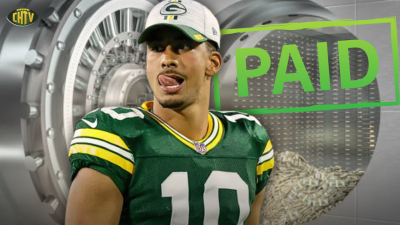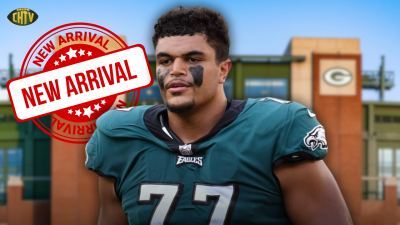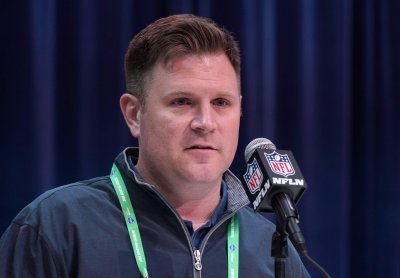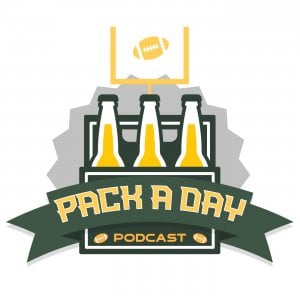X's and O's: Fire Zone Blitz
An extensive look at the bread and butter blitz scheme employed by both the Steelers and Packers.
By PackerAaron
Frequent Cheesehead TV commenter "Paul Ott Carruth", a former player and coach, breaks down a different aspect of the Packers and their opponents from an X's and O's standpoint. Today he looks at the Fire Zone Blitz as employed by both the Packers and Steelers.
I promised a look at Fire Zones and what better way to start off the Super Bowl chess match than to dive in to a method of attack that both the Steelers and Packers employ. Fire zones are a way to get pressure without having to run man coverage if you have an average secondary. The Packers have run their fair share of fire zone this season but because they have outstanding cover people they haven’t had to rely on it as much. The Bears use this as their main way to get pressure because they can’t afford to expose their below average corners and safeties. Fire zones are traditionally run when the ball is on the hash and the pressure is brought from the field (wide side) because teams are dropping a defensive lineman to cover space. It is much easier to ask a 300lb man to cover a short area than to ask him to cover large amounts of real estate. Because the pro game is played in the middle of the field it due to the close proximity of the hash marks, this might seem negligible, but believe me, any time you can make a 300lb man’s life easier as a cover man, you do it. In this X and O segment we look at the Capers/LeBeau fire zone. Personally, I love fire zones. There is tremendous flexibility in them and you can bring guys from all over the place and still maintain sound coverage on the back end. The Packers and Steelers won’t have to worry about watching their opponent’s fire zone pressures on film to see where guys come from. Both offensive staffs should be knocking on the doors down their respective hallways to see what’s going on. After all, Capers and LeBeau are the masterminds of this approach. It would serve McCarthy and Arians well to take note of the classic George C. Scott line in Patton…..”Rommel you magnificent bastard, I read your book!” After all….. it’s sitting right on their shelves.
Diagram Explanation: The vertical green dashed lines represent hash marks and the thick white line represents the boundary (out of bounds line).
Diagram #1 (click to enlarge): 
This diagram shows a fire zone from the field (wide side). In this case, we have the two corners covering the deep outside thirds of the field and the free safety rotating to the deep middle third. The strong safety rotates down in the box to play the seam route of the #2 receiver. If the #2 receiver runs to the flat, the strong safety will look to get under the route of #1 to get under a possible curl route. He will not jump the route to the flat by #2. The nickel back (N) will be the contain rusher. The Will backer to the TE will long stick to the front side A gap. The nose tackle over the center will short stick to the opposite A gap. The defensive tackle to the weak side will assume contain rush responsibilities to the boundary. The open side Will backer is the seam player on the open side. The Buck will blitz the C gap and the Mac backer will be the final three player, meaning he will lean to the 3rd receiver in the route scheme. If a back should release to the strong side he will lean that way. Otherwise, he will balance up vs. a balanced formation (2 x 2).
Diagram #2 (click to enlarge): 
This is an example of a fire zone from the boundary. Here we see the boundary corner blitzing off the short corner and the Mac backer assuming the contain rush. The free safety, strong safety, and corner to the field assume the 3 deep coverage. The Will backer to the field is the seam player and the Buck is the seam player to the boundary side of the formation. Because the Mike is in the blitz and the Buck is vacating the strong side to cover the boundary seam, the final 3 player has to come from one of the defensive tackles/ends. In this diagram, I have the DE assuming this role. The Packers will allow the Will and DE run an exchange with the Will assuming the final 3 role and the End dropping to the seam but this is based on matchups. If that #2 receiver is a skillful TE like the Packer’s Finley the Will backer will remain in the seam role. It would be foolish to have a 300lb defensive lineman run up the seam with a great TE.
Raji Pick 6: If you rewatch the tape of the Raji pick you’ll see that Raji assumes a final 3 type role. I say “type role” because Capers dialed up a patented zone blitz (4 man rush) instead of a 5 man fire zone rush. I couldn’t quite see the safety play but it was either 2 man (such as Shields game clinching interception) or it was the standard Cover 7 with single high safety. Either way, It gave the appearance of a fire zone by bringing the corner from the boundary but dropping Raji to the short middle. Raji does a terrific job leaning to the 3rd receiver who happened to Forte running the “angle” route after Hester had cleared out on the shallow cross. Great call by Capers and a nice mix of coverage and bringing pressure from unexpected places while staying sound in coverage.
One of the weaknesses of traditional 3 under 3 deep firezones are outside the numbers. The quick game is the antidote of the fire zone…..that’s if the QB can find open receiver. Additionally, the seams are weak if the seam defenders do not collision and reroute the seam routes. The antidote to this is to run a fire zone with a 2 high shell. In this diagram you have two seam defenders that assume the same roles as if they were functioning within a 3 high shell. The field corner is baiting the QB to throw the quick route so he can jump it. He can do this because he has a free safety running from the middle of the field to cover the wide side deep half. The boundary corner is dropping to the deep half on the weak side. The weakside Will backer covers the flat on the weakside. The Mac backer is the seam defender to the weakside should the FB release up the seam. So who’s on the rush? The strong side Will is a contain rusher to the strong side and the weakside DT is the contain rusher to the weakside. The nose tackle short sticks to the boundary side A gap. The Buck will blitz the B gap and the strong safety creeps down prior to the snap and runs through the open seam once protection declares. If timed well, this opens up like the Red Sea and is incredibly destructive and suprising. The Packers have not run this much but it is in the arsenal. The Steelers like to use this with Polamalu. The weakness of this fire zone coverage is obvious. There is no final 3 player sitting in the low hole so naturally, the middle of the defense “up the pipe” is very weak. But again, just because it’s a weakness doesn’t mean the QB will have the time to find it. It’s just like Raji said about getting pressure on Cutler. If he has to drop his eyes for the rush he can’t see the receiver routes.
PLEASE SUBSCRIBE TO OUR CHEESEHEAD NATION WEEKLY NEWSLETTER HERE.
__________________________














Comments (8)
January 24, 2011 at 10:36 pm
Wow, thanks. This is exactly what is missing from most football coverage.
January 25, 2011 at 11:03 am
So true. The game is much more fun when I understand it.
January 25, 2011 at 12:07 am
I LOVE IT!
January 25, 2011 at 12:20 am
Tribute to the Pack......Green & Yellow!!!!!!!! http://www.youtube.com/watch?v=E2c8Dd830GA
January 25, 2011 at 12:23 am
This is really interesting. Thank you very much!
January 25, 2011 at 11:35 am
Fantastic article. Learning more and more for every line.
January 25, 2011 at 12:09 pm
I really don't like when we use ILBs to the firezone. We seldomly hit home in time, and teams have enough film on us doing it that QBs usually know where to go with the ball once they see it and their line is able to pick up the blitz.
The corner blitz, however, is usually money.
Though I got really nervous with Capers (or Hawk) calling for the blitzes when the Bears where in no-huddle, as they kept picking up the blitz and converting the down... Thought the best approach then would be the 4 man rush, cover 2 man, or the 3 man rush zone prevent.
January 25, 2011 at 12:12 pm
I agree PackersRS. I thought Capers got a little too blitz happy and stopped mixing in coverage. The final interception by Shields was geared toward coverage as he had them in 2 man (2 deep half field safeties with man coverage underneath). In 2 man, the underneath coverage can play trail technique and get under the routes, which is exactly what Shields did.